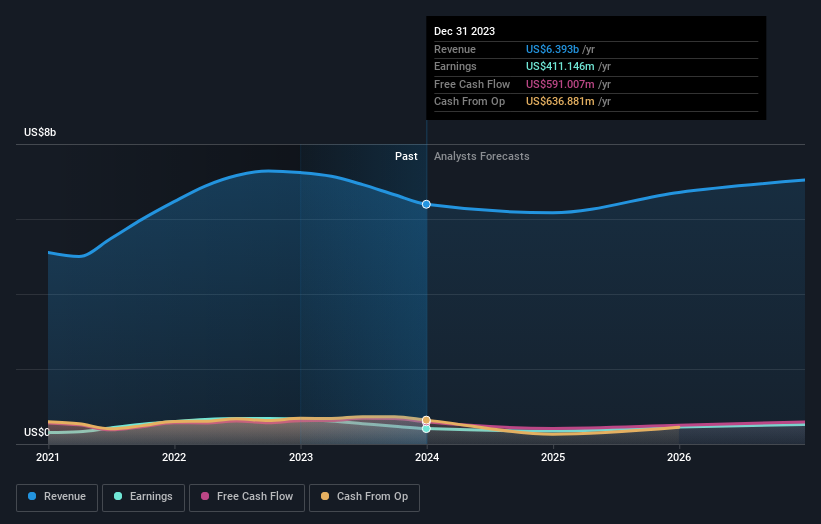Robert Half Inc. (NYSE:RHI), is not the largest company out there, but it saw significant share price movement during recent months on the NYSE, rising to highs of US$82.25 and falling to the lows of US$69.31. Some share price movements can give investors a better opportunity to enter into the stock, and potentially buy at a lower price. A question to answer is whether Robert Half's current trading price of US$69.56 reflective of the actual value of the mid-cap? Or is it currently undervalued, providing us with the opportunity to buy? Let’s take a look at Robert Half’s outlook and value based on the most recent financial data to see if there are any catalysts for a price change.
See our latest analysis for Robert Half
What's The Opportunity In Robert Half?
Good news, investors! Robert Half is still a bargain right now according to our price multiple model, which compares the company's price-to-earnings ratio to the industry average. We’ve used the price-to-earnings ratio in this instance because there’s not enough visibility to forecast its cash flows. The stock’s ratio of 17.49x is currently well-below the industry average of 25.94x, meaning that it is trading at a cheaper price relative to its peers. Although, there may be another chance to buy again in the future. This is because Robert Half’s beta (a measure of share price volatility) is high, meaning its price movements will be exaggerated relative to the rest of the market. If the market is bearish, the company’s shares will likely fall by more than the rest of the market, providing a prime buying opportunity.
What kind of growth will Robert Half generate?

Investors looking for growth in their portfolio may want to consider the prospects of a company before buying its shares. Although value investors would argue that it’s the intrinsic value relative to the price that matter the most, a more compelling investment thesis would be high growth potential at a cheap price. Robert Half's earnings over the next few years are expected to increase by 27%, indicating a highly optimistic future ahead. This should lead to more robust cash flows, feeding into a higher share value.
What This Means For You
Are you a shareholder? Since RHI is currently below the industry PE ratio, it may be a great time to increase your holdings in the stock. With an optimistic outlook on the horizon, it seems like this growth has not yet been fully factored into the share price. However, there are also other factors such as financial health to consider, which could explain the current price multiple.
Are you a potential investor? If you’ve been keeping an eye on RHI for a while, now might be the time to make a leap. Its prosperous future profit outlook isn’t fully reflected in the current share price yet, which means it’s not too late to buy RHI. But before you make any investment decisions, consider other factors such as the strength of its balance sheet, in order to make a well-informed assessment.
In light of this, if you'd like to do more analysis on the company, it's vital to be informed of the risks involved. While conducting our analysis, we found that Robert Half has 1 warning sign and it would be unwise to ignore it.
If you are no longer interested in Robert Half, you can use our free platform to see our list of over 50 other stocks with a high growth potential.
New: AI Stock Screener & Alerts
Our new AI Stock Screener scans the market every day to uncover opportunities.
• Dividend Powerhouses (3%+ Yield)
• Undervalued Small Caps with Insider Buying
• High growth Tech and AI Companies
Or build your own from over 50 metrics.
Have feedback on this article? Concerned about the content? Get in touch with us directly. Alternatively, email editorial-team (at) simplywallst.com.
This article by Simply Wall St is general in nature. We provide commentary based on historical data and analyst forecasts only using an unbiased methodology and our articles are not intended to be financial advice. It does not constitute a recommendation to buy or sell any stock, and does not take account of your objectives, or your financial situation. We aim to bring you long-term focused analysis driven by fundamental data. Note that our analysis may not factor in the latest price-sensitive company announcements or qualitative material. Simply Wall St has no position in any stocks mentioned.
About NYSE:RHI
Robert Half
Provides talent solutions and business consulting services in the United States and internationally.
Flawless balance sheet, undervalued and pays a dividend.
Similar Companies
Market Insights
Community Narratives



